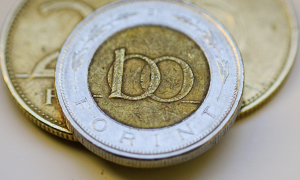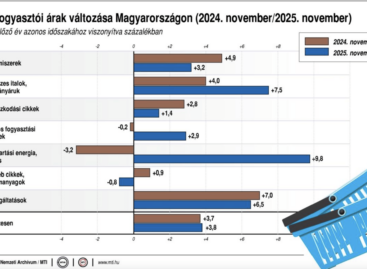Inflation: stagnation instead of expected increase – 4.3% annual rate, 3.9% core inflation
The rate of inflation did not change in September: consumer prices exceeded the previous year by an average of 4.3%, while core inflation remained at 3.9%, according to a recent report by the Central Statistical Office. “It is somewhat of a pleasant surprise that the rate of price increases has stagnated. Core inflation has also remained at the August level,” said Károly Beke, an analyst at Portfolio, on InfoRádió, reminding that the market had expected a slight acceleration.
What happened in the basket?

The annual increase in food prices slowed from 5.4% to 4.7%, meaning that the slowdown is clear. On a monthly basis, the price of clothing products increased by +1.5%; According to Beke, this is an “extremely high” monthly rate, but the segment is highly seasonal, so it is not worth drawing exaggerated conclusions from one piece of data.
Household energy shows +10.6% on an annual basis, but here the Central Statistical Office uses household-level accounting, which takes into account the difference between the reduced utility price and the retail market price – the analyst specifically drew attention to this methodological peculiarity.
The impact of policy measures and professional debate
According to Károly Beke’s calculations, margin stops and voluntary price restrictions will hold back the indicator by nearly 1.5 percentage points: “without them, the Hungarian inflation rate would be around 5.5–6%.”[br data-start=”1401″ data-end=”1404″ />The Ministry of National Economy emphasized in its statement that the government is taking decisive action against unjustified price increases and has extended the margin reduction until November 30; In addition, voluntary price restrictions apply in several service sectors (banks, insurance companies, telecom, pharmaceuticals).
In contrast, the National Trade Association drew attention to the fact that if the goal is to reduce inflation, the government should not only look for the problem in retail: an investigation is also justified in other sectors, and it is worth reviewing the taxes and official measures that cause price increases.
Outlook: It may fall below 4% by the end of the year
Inflation may fluctuate within the current range in the next 2–3 months, and values below 4% may also occur in the last weeks of the year – Beke predicted. Inflation “could fall further, even below 3%, in early 2026.” The indicator could return permanently to the central bank’s 2–4% target range by the end of this year or early 2026.
Messages to traders
-
Food: the combination of the slowing annual pace and margin constraints warrants cautious promotional calibration; the “good-better-best” ladder and the further strengthening of the role of private labels are expected.
-
Clothing: the monthly price movement that has increased due to the autumn season is more of a stock and pricing calendar issue; seasonality dominates, not a trend reversal.
-
Energy-sensitive categories: due to the settlement characteristics of overhead components, it is worth planning with cautious margin management.
Overview: September data shows stagnant inflation and a further cooling core. The short-term trajectory is more sideways, and by the end of the year the range below 4% could come – while the weight of market and regulatory factors in retail pricing remains high.
Related news
The Hungarian Confederation of Economic Workers also spoke out regarding the inflation data
🎧 Hallgasd a cikket: Lejátszás Szünet Folytatás Leállítás Nyelv: Auto…
Read more >KSH: in November, consumer prices exceeded the values of the same month of the previous year by an average of 3.8 percent
🎧 Hallgasd a cikket: Lejátszás Szünet Folytatás Leállítás Nyelv: Auto…
Read more >Extended margin squeeze begins – 13 more products will be subject to regulation
🎧 Hallgasd a cikket: Lejátszás Szünet Folytatás Leállítás Nyelv: Auto…
Read more >Related news
Record-breaking Black Friday in online orders
🎧 Hallgasd a cikket: Lejátszás Szünet Folytatás Leállítás Nyelv: Auto…
Read more >Campaign launched to dispel misconceptions about meat and dairy products
🎧 Hallgasd a cikket: Lejátszás Szünet Folytatás Leállítás Nyelv: Auto…
Read more >The newest PENNY store opened in downtown Szolnok
🎧 Hallgasd a cikket: Lejátszás Szünet Folytatás Leállítás Nyelv: Auto…
Read more >







